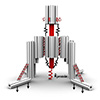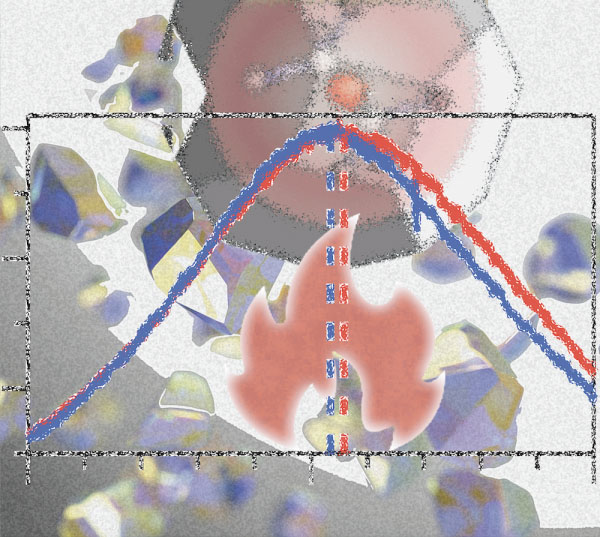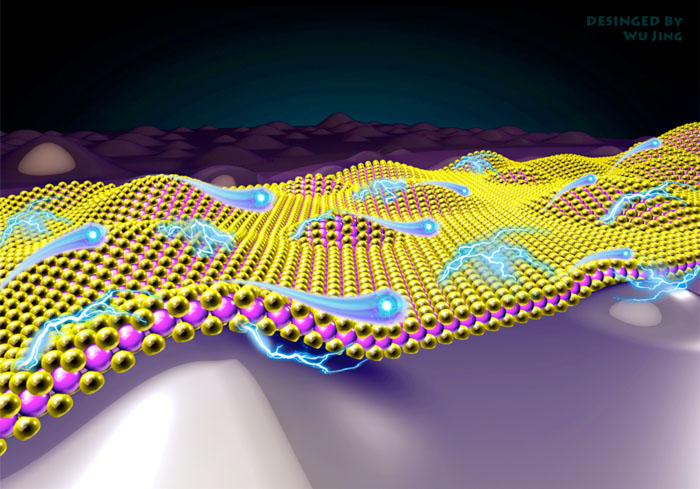Jul 28, 2022 (Nanowerk News) When the heat of summer hits, air conditioners turn on and energy demand skyrockets, straining the grid. In a warmer world, more efficient cooling options will play an important role in curbing the increase of cooling-related energy demands. This will be particularly true for the...
Reducing food waste with novel biomaterials technologies
Jul 28, 2022 (Nanowerk Spotlight) Food waste reduction offers multi-faceted wins for people and planet, improving food security, addressing climate change, saving money and reducing pressures on land, water, biodiversity and waste management systems. Consider the staggering scale of the problem: Data gathered by the FAO, the Food and Agriculture...
New nanocomposite copper coating could be the next superbug fighter
Jul 28, 2022 (Nanowerk News) A new copper coating that kills bacteria quicker and in greater amounts than current formulations could soon be available for hospitals and other high-traffic facilities. Although current formulations made of pure copper are antibacterial and self-sanitizing, they kill certain types of bacteria with a thicker...
4D composite printing can improve the wings of drones (w/video)
Jul 28, 2022 (Nanowerk News) The aviation industry faces multiple pressures from higher fuel costs and increased scrutiny over the environmental and quality-of-life impacts from its aircraft. Researchers are looking for new methods of keeping expenses down while improving overall efficiency, and the relatively new market of unmanned aerial vehicles...
A nano-robot built entirely from DNA to explore cell processes
Jul 28, 2022 (Nanowerk News) Constructing a tiny robot from DNA and using it to study cell processes invisible to the naked eye... You would be forgiven for thinking it is science fiction, but it is in fact the subject of serious research by scientists from Inserm, CNRS and Université...
Scientists use copper nanowires to combat the spread of diseases
Jul 28, 2022 (Nanowerk News) An ancient metal used for its microbial properties is the basis for a materials-based solution to disinfection. A team of scientists from Ames National Laboratory, Iowa State University, and University at Buffalo developed an antimicrobial spray that deposits a layer of copper nanowires onto high-touch...
A nanokelvin microwave freezer for molecules
Jul 28, 2022 (Nanowerk News) Researchers at Max Planck Institute of Quantum Optics (MPQ) have developed a novel cooling technique for molecular gases. It makes it possible to cool polar molecules down to a few nanokelvin ("Evaporation of microwave-shielded polar molecules to quantum degeneracy"). The trick used by the team...
Intracellular nanothermometer has unprecedented versatility
Jul 28, 2022 (Nanowerk News) Everyone has their temperature measured at a physician's office as a basic indicator of health. Intracellular temperature is also a basic indicator of cellular health; cancer cells are more metabolically active—and thus can have a slightly higher temperature—than healthy cells. However, until now the available...
Nanodiamonds are a cell’s best friend
Jul 27, 2022 (Nanowerk News) Nanodiamonds' repertoire of applications expands constantly, including everything from ultra-fine coatings to precise drug delivery. Now, Kyoto University and Daicel Corporation have developed nanodiamonds to detect temperatures on the nanoscale inside cells and organelles (Carbon, "All-optical nanoscale thermometry based on silicon-vacancy centers in detonation nanodiamonds")....
Researchers give 2D electronics a performance boost
Jul 27, 2022 (Nanowerk News) Two dimensional (2D) semiconductors have a unique property that allows their thickness to be reduced to one or few atoms – and this property could potentially minimise the short channel effects that remain an issue in advanced silicon-based transistors, for example, turning on a transistor...









